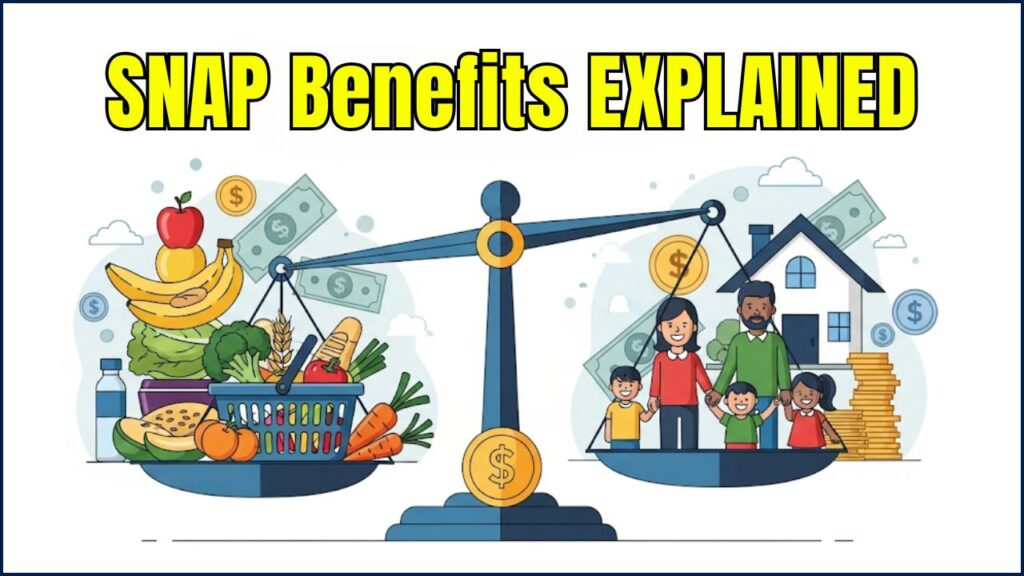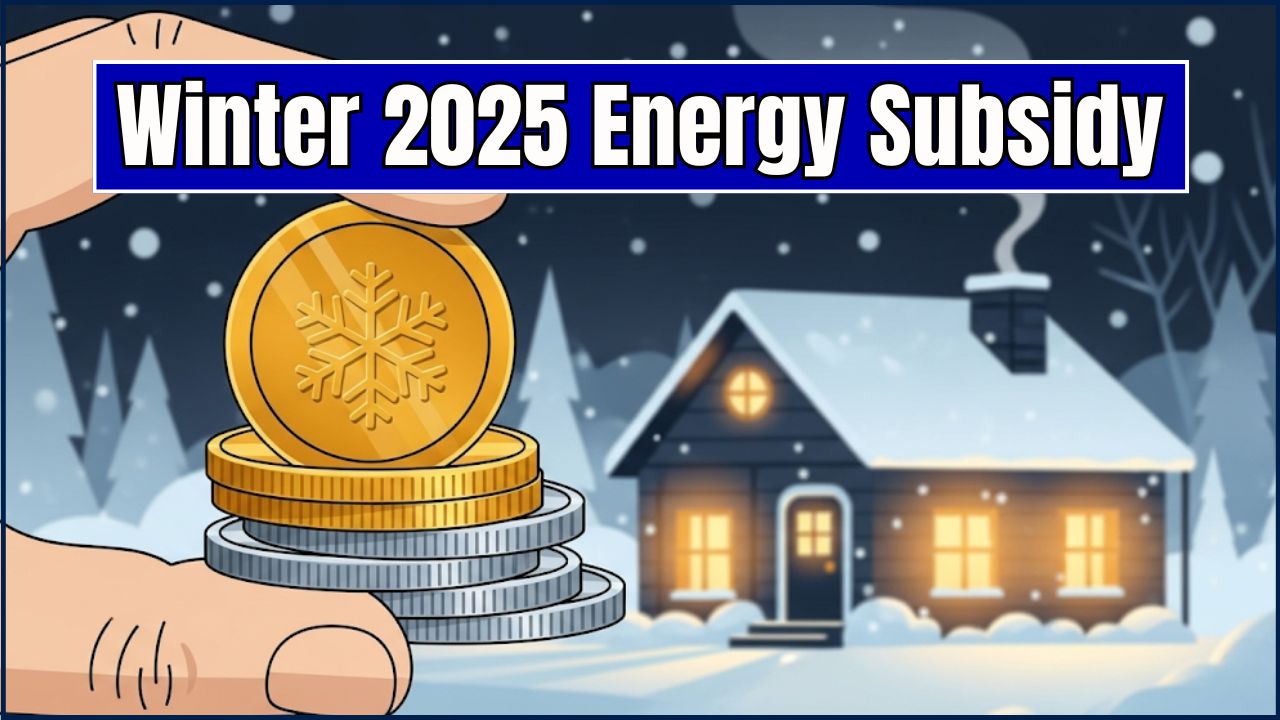Navigating government programs like SNAP (Supplemental Nutrition Assistance Program) can feel like wrangling a wild mustang. But don’t worry, we’ve saddled it up for you. SNAP Benefits in 2025 just got a makeover, and there are 7 hidden rules every working American needs to know. Whether you’re busting your tail at two jobs, caring for your kids, or just trying to make ends meet, these updates could seriously impact your kitchen table.

To keep things even more helpful, we’ve added real-life quotes from benefit recipients, expert tips, a short glossary of key terms, and links to mobile tools and community resources.
SNAP Benefits EXPLAINED
| Topic | Stat/Facts | Why It Matters |
|---|---|---|
| ABAWD Age Expanded | Now covers ages 18–64 | More adults must meet work rules |
| Work Requirement | 80 hours/month (work, volunteer, or train) | Failing this = loss of benefits |
| Income Eligibility (1 person) | Gross: $1,632 / Net: $1,255 | Income caps determine if you qualify |
| Resource Limits | $2,750 (or $4,250 if 60+/disabled) | Assets like savings affect eligibility |
| New State Waiver Rules | Only areas w/ 10%+ unemployment | Fewer counties qualify for work exemptions |
| Exemption Expansion | Includes some Native American statuses | Cultural protections preserved |
| Benefit Cuts Projected | Up to 2M may lose or see cuts | Impact across working-age adults |
SNAP changes in 2025 are a wake-up call for working Americans. From age expansions to work rules to income and asset thresholds, there’s a lot to unpack. But with a little knowledge, some tracking, and the right paperwork, you can stay eligible and keep that food on the table.
Stay alert. Be ready. Use what you’ve learned here to stay one step ahead of the system. You got this.
What Is SNAP & Why It Matters in 2025
SNAP helps low-income individuals and families buy groceries. It’s been around since the 1960s, but every few years, it changes. In 2025, the changes are no joke. New rules expand who has to work, tighten income and resource checks, and push states to enforce stricter guidelines.
If you’re a working American without kids, you’re probably in the crosshairs of these updates. Let’s break it down plain and simple.
The 7 Hidden Rules Every Working American Should Know
1. You Gotta Work If You’re Able-Bodied (ABAWD Rule)
If you’re 18 to 64, don’t have dependents, and aren’t disabled, you’re now expected to log at least 80 hours/month in work, training, or volunteering. Miss that? You only get SNAP for 3 months every 3 years.
Pro Tip: Even gig work counts. So track those hours with a timesheet app or journal.
“I work part-time and take care of my grandbaby. I didn’t know volunteering at the food bank could help me keep SNAP until I asked my caseworker.” – Tammy W., Mississippi
2. Age Cap Moved From 50 to 64
This is huge. Before, the work rule only hit folks under 50. Now, even folks in their early 60s are getting roped in. That means more people than ever have to meet the 80-hour rule.
3. Waivers Are Harder to Get
States used to help counties waive work rules if jobs were scarce. But now, a waiver only applies if unemployment is 10%+. Most counties don’t meet that, so fewer folks are getting exempted.
Check with your local SNAP office. Don’t assume you’re waived.
4. Income Limits Tightened
In 2025, you can’t earn more than 130% of the poverty line (gross) or 100% (net). That’s $1,632 gross for a single adult. But you can deduct things like childcare or high rent.
Maximize deductions to lower your “net” income. That could be the ticket to keeping your benefits.
5. Your Assets Can Disqualify You
Got more than $2,750 in the bank? SNAP might say, “You’re good enough to feed yourself.” If you’re 60+ or disabled, you get a higher limit ($4,250). Vehicles and retirement accounts might be excluded depending on your state.
6. Native Status May Offer Protections
Under IHS definitions, Urban Indian, Tribal Indian, and Alaska Native status can affect eligibility or provide exemptions from ABAWD rules. Some states recognize these groups for special protections.
Talk to your Tribal or Urban Indian health clinic. They often have SNAP liaisons.
7. Privacy Lawsuits Are Booming
States like California and New York are pushing back on new federal rules demanding deeper personal data. Be prepared for more questions during recertification.
Stay calm. Just know your rights and what you need to provide.
Step-by-Step Guide to Protect Your Benefits in 2025
Step 1 – Check Your Status
Are you:
- Able-bodied?
- Aged 18–64?
- Without kids? If yes, you’re likely ABAWD. Track your hours or seek exemptions.
Step 2 – Track Work or Volunteer Hours
Apps like Stride, GigTrack, or even Google Sheets can help you document hours for work or volunteering.
Step 3 – Max Out Deductions
Things like high housing costs or dependent care could bring your income under the net line.
Step 4 – Monitor Assets
If you’ve got savings over the limit, consider legal spend-down options like prepaying bills or medical expenses.
Step 5 – Stay Updated on State Waivers
Visit your state’s SNAP page monthly. Waiver rules change often.
SNAP Eligibility Basics (2024 vs. 2025)
Understanding the specifics of SNAP can be tricky, especially with yearly updates. Here’s a quick comparison of some general eligibility guidelines to help you see what’s consistent and what might have shifted from 2024 into 2025.
| Feature | 2024 (General Guidelines) | 2025 (General Guidelines – Effective Oct 1, 2024) |
| Gross Income Limit | Typically 130% of Federal Poverty Level (FPL) | Typically 130% of Federal Poverty Level (FPL) – Adjusted for COLA |
| Net Income Limit | Typically 100% of Federal Poverty Level (FPL) | Typically 100% of Federal Poverty Level (FPL) – Adjusted for COLA |
| Resource Limit | Around $2,750; $4,250 for households with elderly/disabled members (may vary by state) | Around $3,000; $4,500 for households with elderly/disabled members (may vary by state) |
| Work Requirements | General work requirements and ABAWD rules apply (with exemptions) | General work requirements and ABAWD rules apply (with exemptions) |
| Maximum Benefit (4-person household) | Varies by state, e.g., $973 (48 states/DC) | Varies by state, e.g., $975 (48 states/DC) – Slight increase due to COLA |
Real-Life Example
Anna, 61, from Oklahoma, works part-time and has no kids. Under 2024 rules, she didn’t need to work to get SNAP. But in 2025? She’s ABAWD and has to work 80 hours/month. She uses an app to log shifts at a local food pantry. She also deducts $400/month in rent, which keeps her net income low enough to qualify.
Glossary of Key Terms
- ABAWD: Able-Bodied Adult Without Dependents
- EBT: Electronic Benefits Transfer card for SNAP funds
- Net Income: After deductions like housing and child care
- Waiver: State-level exemption from federal rules
FAQs
Q: What if I can’t work due to a temporary injury?
A: Get a doctor’s note! Temporary disability can exempt you from ABAWD rules.
Q: Can I count gig work or babysitting?
A: Yep, as long as it’s legal and documented.
Q: Are food banks the same as SNAP?
A: Nope. Food banks are community-run. SNAP is federal and loaded on an EBT card monthly.
Q: Will my student loans or grants affect eligibility?
A: It depends. Loans don’t count, but some grants might if they cover living expenses.
Q: What if I need help applying?
A: Call your state SNAP office or a local community action center. Sites like Benefits.gov are great for guidance.














